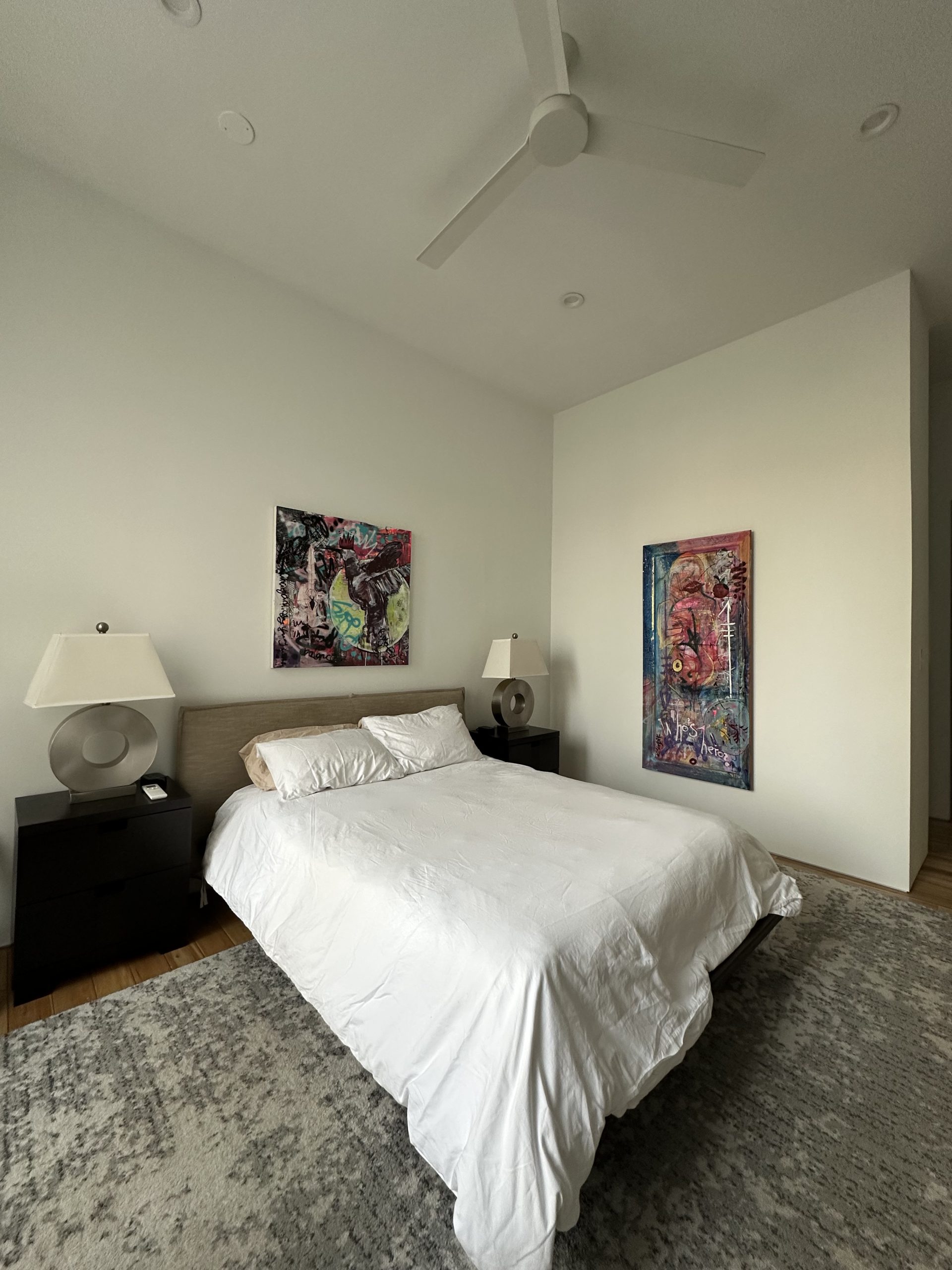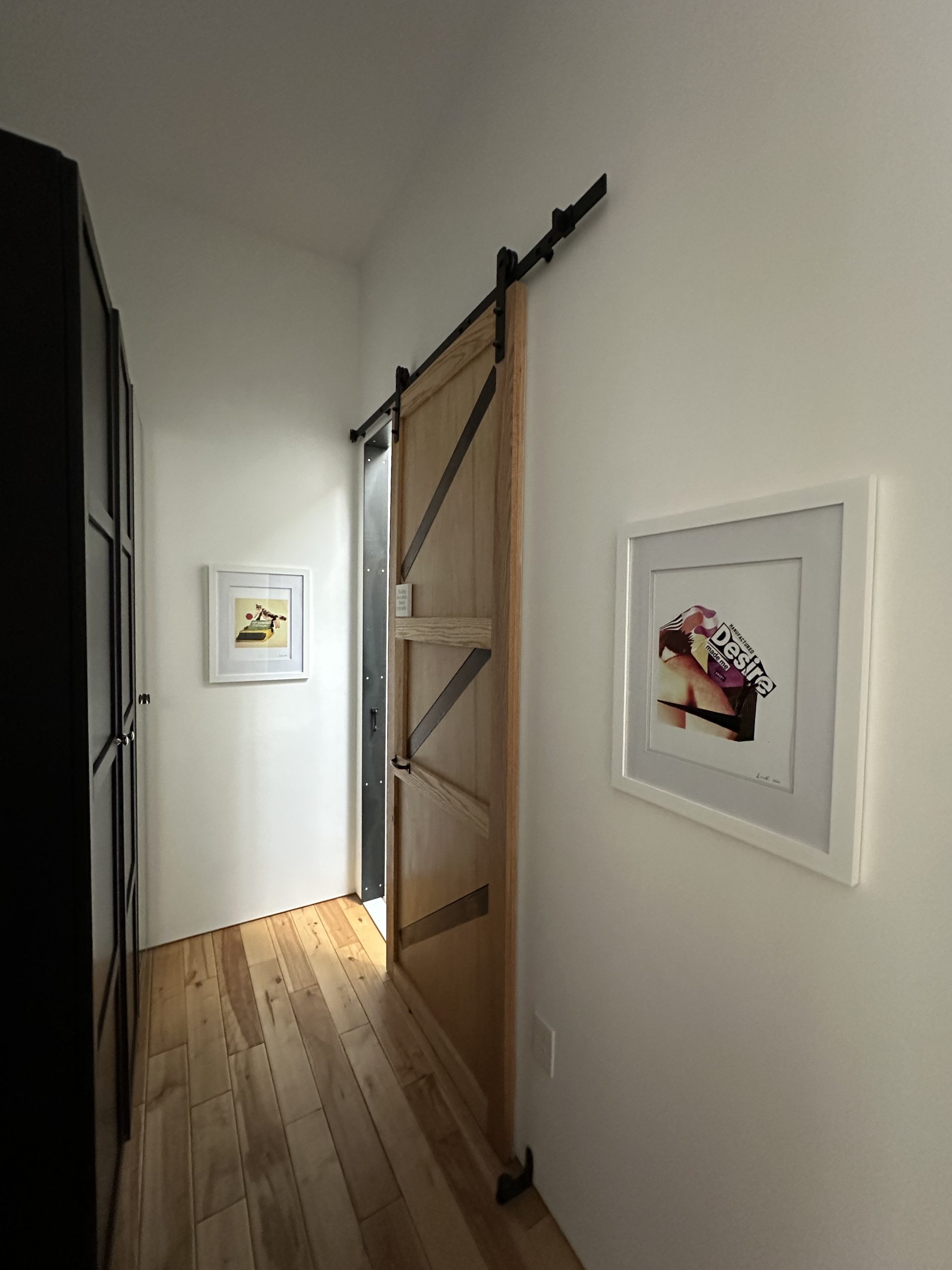Where the Baroque used chiaroscuro—those dramatic contrasts of light and shadow—to explore human grandeur with vulnerability, Nicole Clark invokes the unrestrained drama of street art.
In a delicate balance between the tempestuous and the elegant, new myths take shape on each canvas. Between layer and layer, she draws out the latent, tumultuous chiaroscuro of today’s “heroism,” inviting us to explore the breaches in our shared stories, moral compasses and identities.
Anti-Hero is a 21st-century “graffiti Baroque,” an emotive response to saccharine myths. Clark breathes introspective life into our uncertainties, resuscitating mythic characters with the raw life they demand—and deserve.
With cross-disciplinary command, Clark attaches the visceral, anarchic immediacy of graffiti to the reflective spirit of classical literature, scripture, and mythology. Like the mythic protagonists in classical works, her figures emerge as if from an aerosol ether—larger than life, yet profoundly human and incomplete. Should we admire? Worship? Mimic?
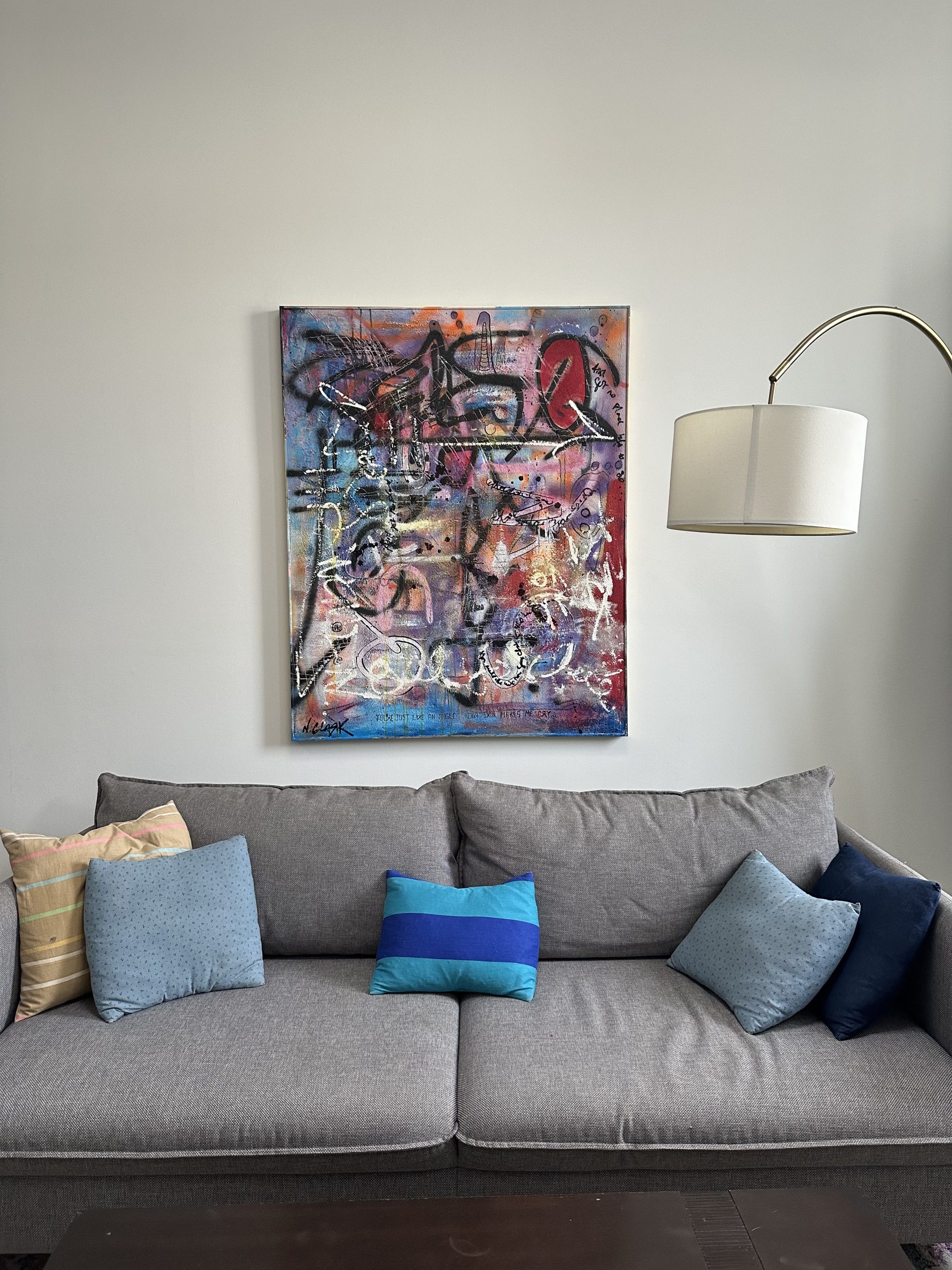
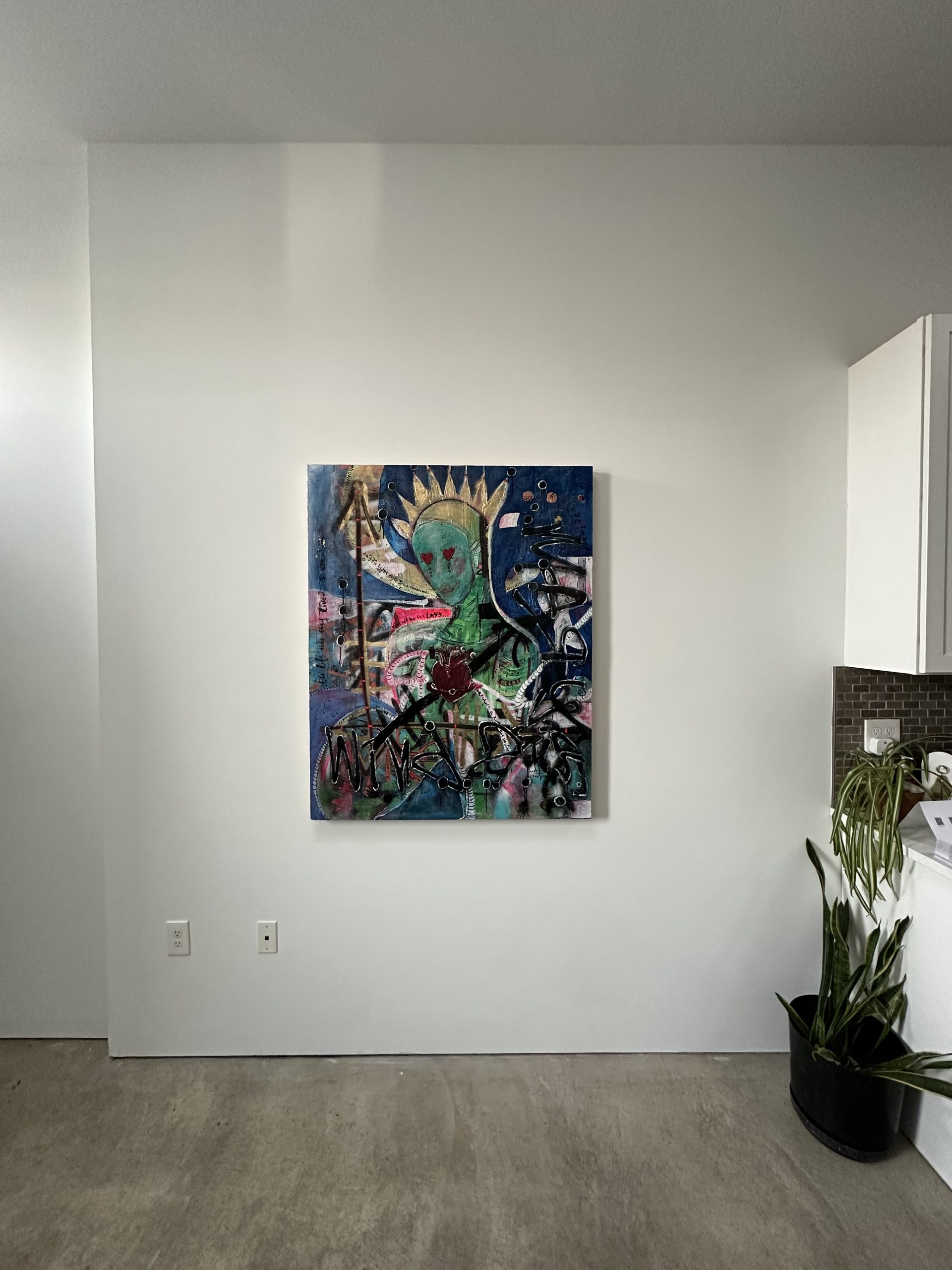
Clark is a color theory criminal—it’s in your hands to approve or understand. Her canvases, like her characters, are alive with incompatible forms: precise, hard-edged lines jostle against loose, free-flowing brushstrokes; bold graffiti-like markings contend with softer, more contemplative spaces. Each piece hums with tension—between precision and chaos, tight narrative form and loose abstraction, stable words and mercurial colors.
And always, there are the stories themselves.
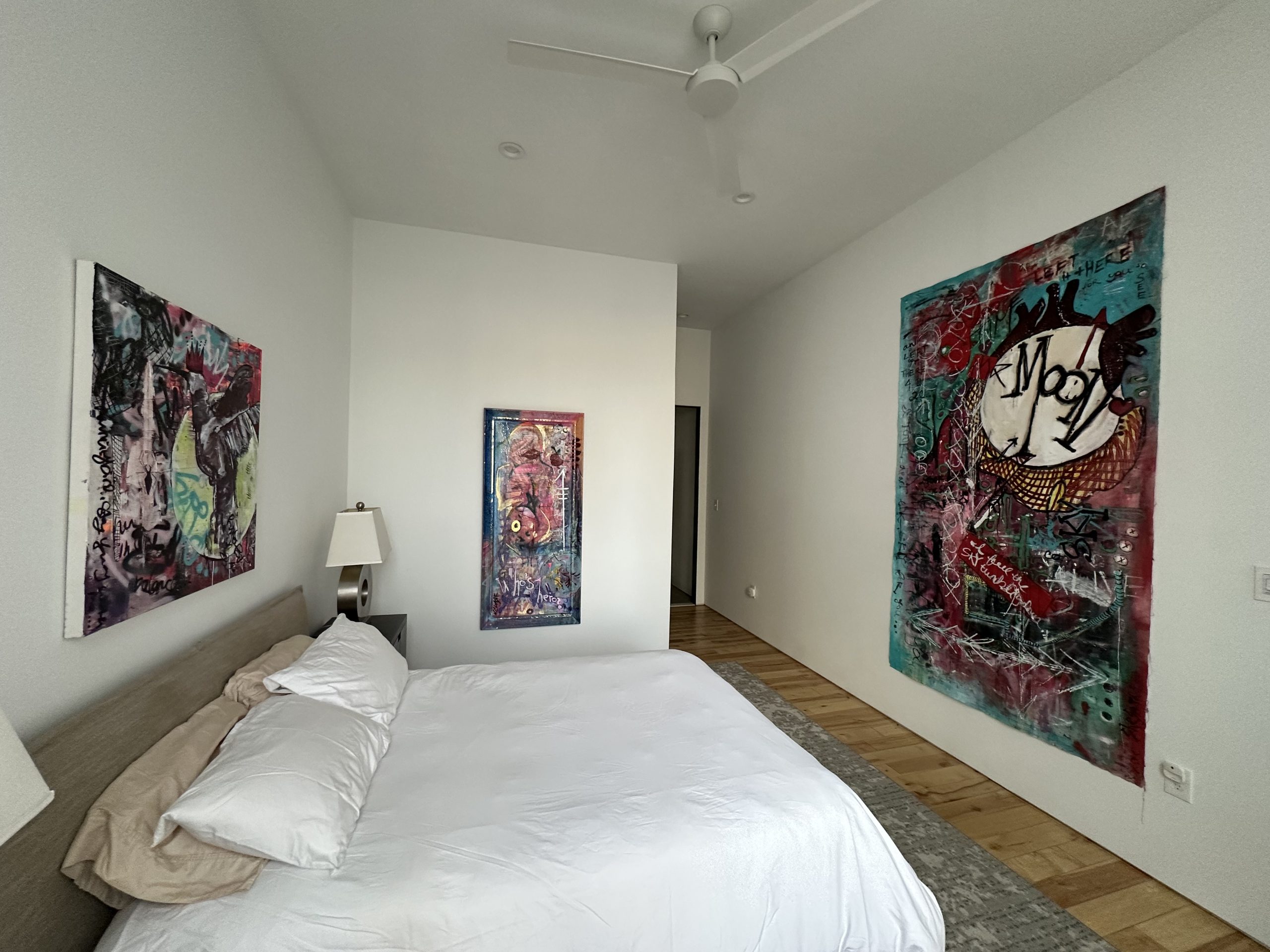
The paintings in Anti-Hero are inseparable from their origin stories. Each piece given mythological weight by fierce, durable narratives. Clark’s characters are extraordinary and familiar—from both scripture and the six o’clock news.
(Mary, certainly, would have been in both.)
The protagonists (and antagonists) echo the ancient archetypes of our cultural imagination, but their humanity is strikingly contemporary.
The interplay between form and color is electric: words as figures and characters anchor us, demanding reflection, while the tempestuous energy of her strokes dares us to feel, to flow.
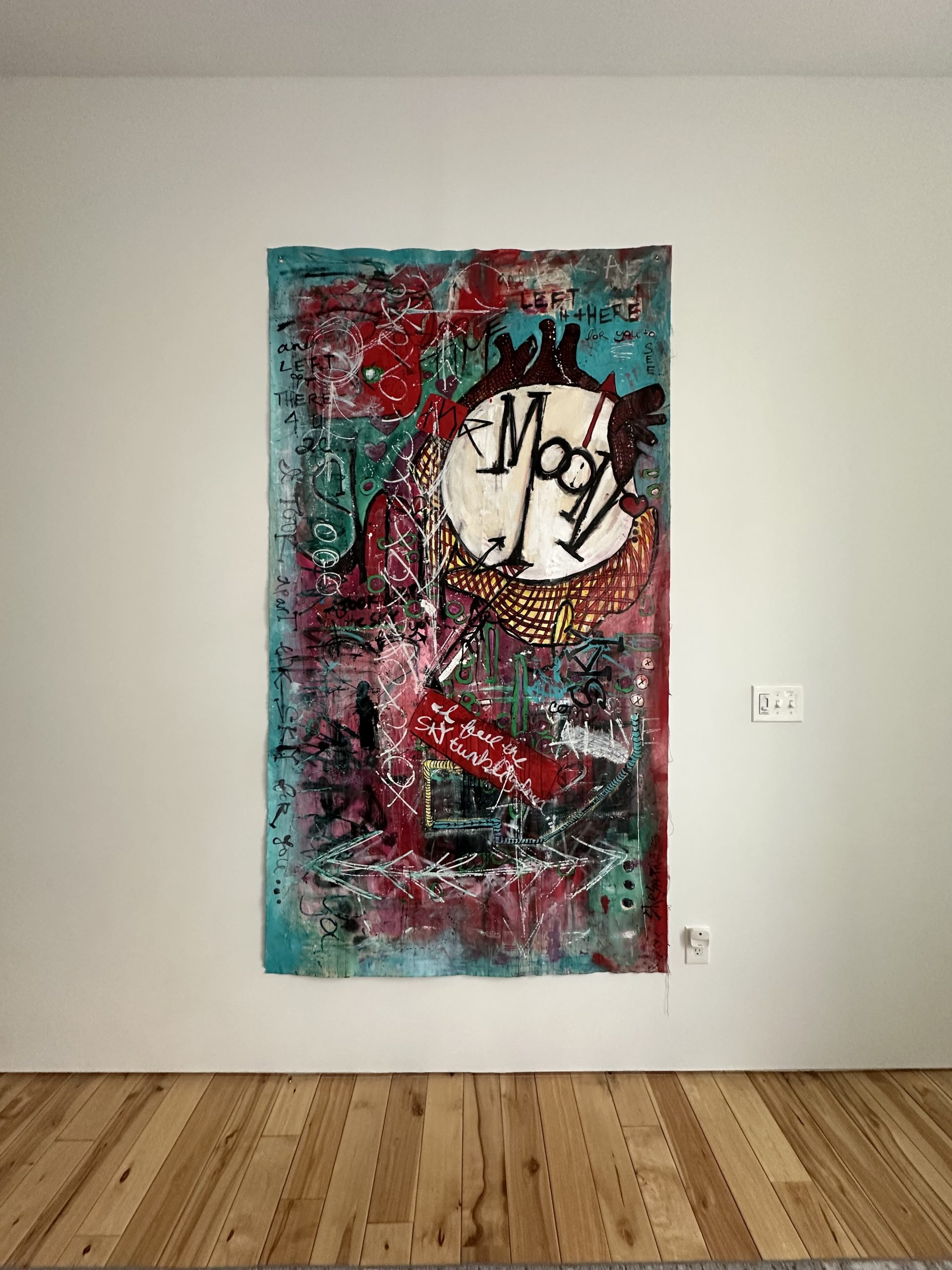

Clark’s work stands apart from the collaborative, mass-produced, and resoundingly male-centric comic book blockbusters. Unlike our studio-driven, highly commercialized cinematic universes, Anti-Hero’s mythmaking is saturated with a singular voice, uniquely hers.
Each canvas is a raw reporting; a story ignored and neglected by studios and markets; a myth written in the tortured style pioneered on the flux of our city’s neglected overpasses, trains and buildings.
Under the high-tension wires between morality and identity, Clark’s work buzzes—but does not resolve; it rings, echoing the murmur of an age longing for new mythologies, heroic and unvarnished.
